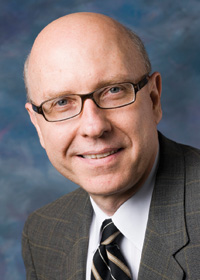Specifically Speaking with Walter 'Skip' Adams

By Martha Entwistle
Updated Mon November 23, 2015
 What kinds of customers/projects do you work with?
What kinds of customers/projects do you work with?
AECOM's client list and range of projects runs the gamut. At any one time our professionals can be providing services to developers, transportation authorities, government agencies, universities, medical centers, and multi-national corporations. Our security and communications design professionals have been an integral part of the wide range of architectural, engineering and consulting services that AECOM has been providing to its clients since 1990. My experience includes designs of security systems for high-rise office buildings, convention centers, university campuses, and defense facilities. My proudest achievement, however, is my involvement in the redevelopment of the World Trade Center leading the design of the security systems for several of its buildings, for Liberty Park and for the WTC Campus Vehicular Security Plan.
Why should security manufacturers be thinking about aesthetic appeal in their product design?
Security has become ubiquitous in all built environments, many of them especially sensitive to the intrusive character of security devices. Good security design practice recognizes the deterrent value of the visibility of security measures, however, experience has taught us the value of aesthetics, whether it is a camera enclosure in an entrance lobby, or a guard booth at a corporate facility's main gate. Historic preservation projects are notoriously challenging in this regard. Where products could not be found to satisfy a client's requirements, our security systems design group has had to work with AECOM architects to devise customized solutions to embedding security while reducing the intrusive character of the security devices. This approach can be most effective in environments such as museums and transit halls where security is naturally assumed to be present, but not necessarily seen. We believe the demand for aesthetically pleasing security solutions will increase. Consequently, manufacturers who are most successful at incorporating aesthetics in product design will find it to be a value-added differentiator for their products.
Why do security directors need force multipliers? What kinds of security technologies do you think are or will be the most promising in this regard?
The simple answer to the first question on this topic is that staffing is the single most costly component of the typical security program. When asked to do more with less, force multipliers assist the security director to maximize the effectiveness of staff. Not all force multipliers are technology-based, but those that are enable the security force to reach out beyond its physical surroundings to sense, gather and present data on intruders as they enter and move about in areas of protection. Force-multiplier technologies that facilitate event response, incident logging and especially investigations, save time and create efficiencies thereby maximizing manpower. As a company grows and its assets increase, the tools of technology will help to manage the increasing responsibilities and slow the need for growth in security staff. As to which technologies are, or will be, the most promising—aside from the force multipliers that are now commonly applied such as CCTV, PACS and IDS—a short list has to include video analytics, PSIM, and mobile applications. Each of those technologies offers a means of collecting, managing, presenting, or disseminating data that frees staff from the mundane and often time-consuming task of piecing together disparate bits of information into a coherent picture of an event. Video analytics is still said to be overpromising and underperforming, but used in their simplest form they are undeniably useful, and continuing improvements will see them reach additional milestones of effectiveness. Facial recognition falls into this category. Soon to be more commonplace in the private sector we believe, the UAS or drone aircraft will add an infinite variety of utilities to the detection and management of incidents including wide-area site surveillance and rapid response of “eyes on” functionality to incident resolution.
Comments